I dearly love a succulent arrangement close planted, lush and full. Do you? Or do you think it’s nuts because the plants will surely outgrow their arrangement too fast? (They won’t.) Do you think planting crowded succulents close together will harm the plants? (It doesn’t.) Just how close can you plant succulents, anyway? (You’ll be amazed.) Or are you willing to try it, if only you knew how to plant so many succulents together in such a small space? After all, in nature, succulents are typically growing crowded or very close together. Let’s take a look at all of these questions as I show you how to plant a succulent arrangement like this.
How Close Can You Plant Succulents?
In this Post We'll Cover:
{Please note, some links in this post may be affiliate links to sites that pay me a small commission if you click on the link and make a purchase. This commission is at absolutely no cost to you. I only recommend products and companies that I have worked with and truly love! ~Kat}
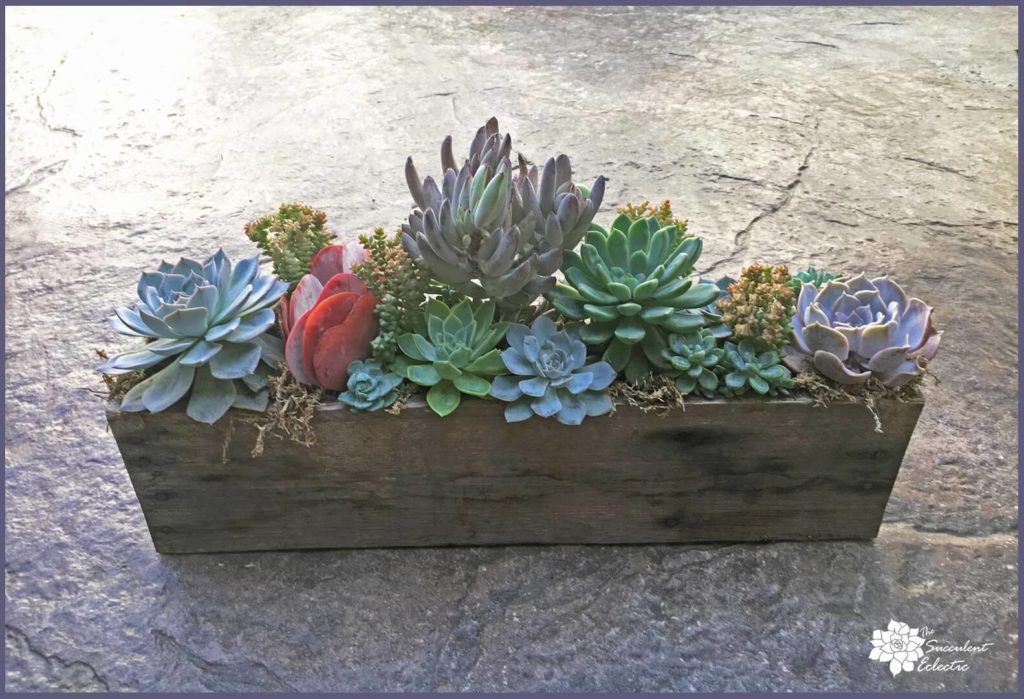
You might love the look of close planted succulents, but can such crowded succulents survive? As we discussed when I covered how to plant succulents for fast growth, these plants will maximize their use of all available resources. In this way, they’re like goldfish. Carassius auratus, the common goldfish, can live for years in a small bowl on your counter, reaching just a couple inches long. Yet in a large lake, these same fish are called carp and quickly grow up to 30 pounds! When given abundant space and soil (and light and moisture) succulents grow fast to fully make use of the available resources. When they are planted very close together, with several plants’ roots competing for soil, moisture and nutrients, the plants will naturally grow much more slowly, so as not to run out of resources. They are exceptionally well adapted to growing in very harsh conditions. Close planting simply works with succulents’ natural abilities to thrive in very close planting quarters.
People often ask, “Do succulents like to be crowded?” and you have likely heard that “succulents love having their roots crowded”. I would say instead, that succulents will thrive even with crowded roots. This is very different from “normal” garden plants that would quickly overgrow or die in similar conditions. Certainly, I find it easier to care for succulents when they are planted close together. You run less risk of overwatering your succulents when there is no empty soil to hold excess water.
Close planted succulent arrangements and containers last far longer than most people think because the succulents slow their rate of growth when they are crowded. You should expect to grow your crowded succulents planter for well over a year without trouble.
Succulents and Planter
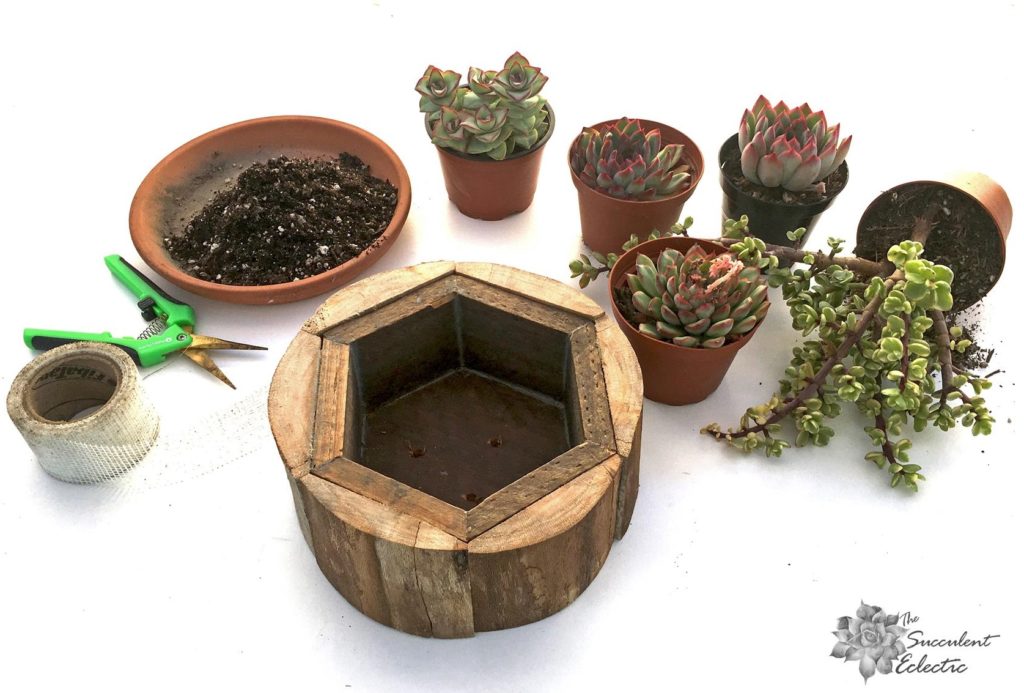
When you’re close planting succulents for an arrangement, you will need some supplies. Start with a planter that has great drainage. If it doesn’t, you can drill your own drainage! You need fast-draining succulent soil and plenty of succulents. Think I have too many here? I add to it!
Use any type of succulents you like together. The key consideration is that all the succulents will thrive in the same light exposure. I used Echeveria Captain Hay – I love the red leaf margins! I also used Portulacaria afra variegata for height and great color. The stacked Crassula perforata, ‘Ivory Towers’ adds a whimsical element with its odd, angular structure, and it also has red margins. I then added Sedum rubrotinctum ‘Aurora’, and Crassula platyphylla (not shown here), both with wonderful stress coloring that will deepen in warmer temps and more light.
This post is not about succulent design – it’s about how to close plant succulents. Choose any style container you like!
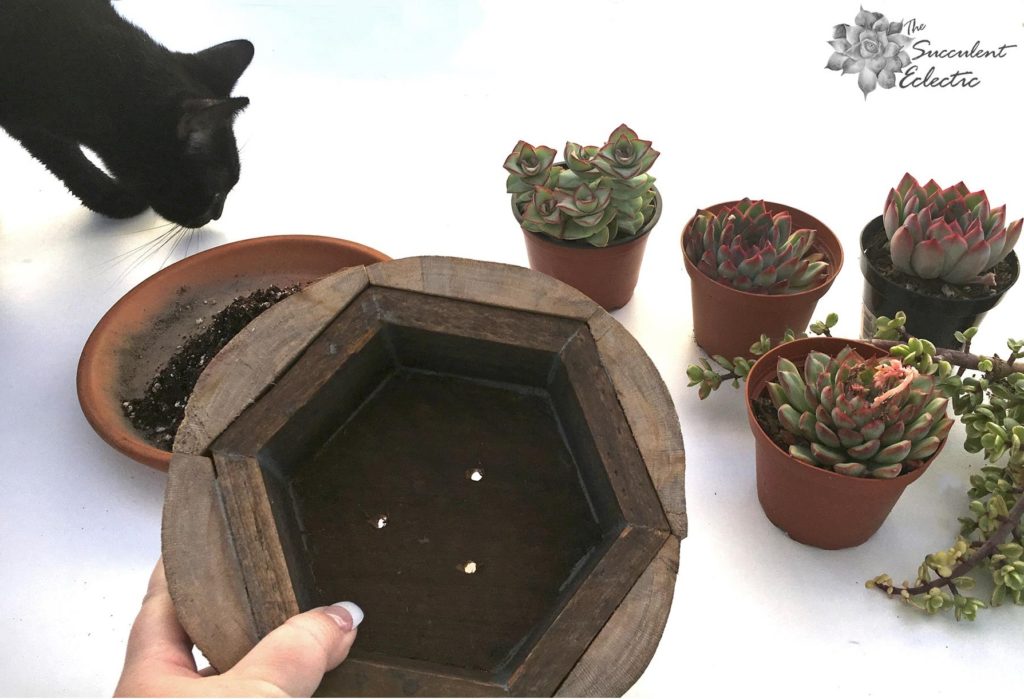
I love this planter that my husband, Jerry made me. He added slices of a log with the bark on to the outside of a hexagon planter he built. So it looks wonderfully organic but has plenty of room for planting. He drilled holes for drainage – and Hitchcock approves. So we’re all set to get started.
Prepare Drainage Holes in Planter
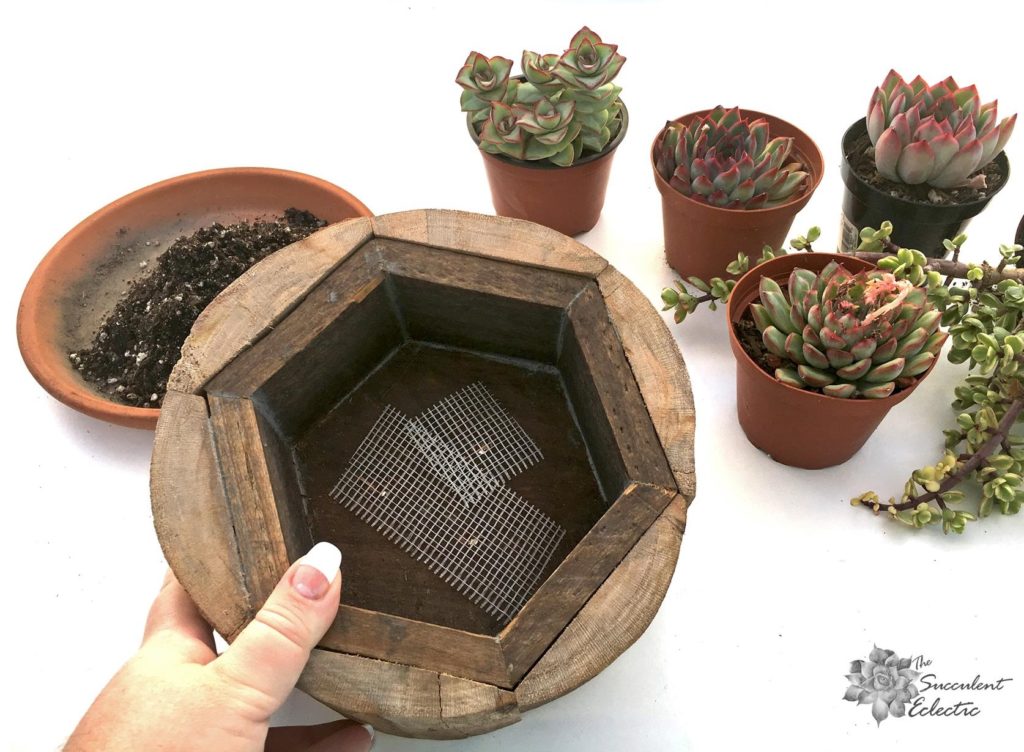
I like to use drywall mesh tape to cover drainage holes. It keeps the soil in and lets the water flow out. It is tacky on the back, so it stays nicely in place. And a single role lasts for hundreds of pots. You can also use screen or shards of pottery. Just be sure you don’t slow the rate of drainage as you block soil from falling out, and you’re good!
Fill your planter part way with soil, with extra standing by. I always use a fast-draining succulent soil, to which I add pumice for even better drainage. And I always add worm castings to both feed my succulents and ward off pests.
Remove Excess Soil from Rootballs
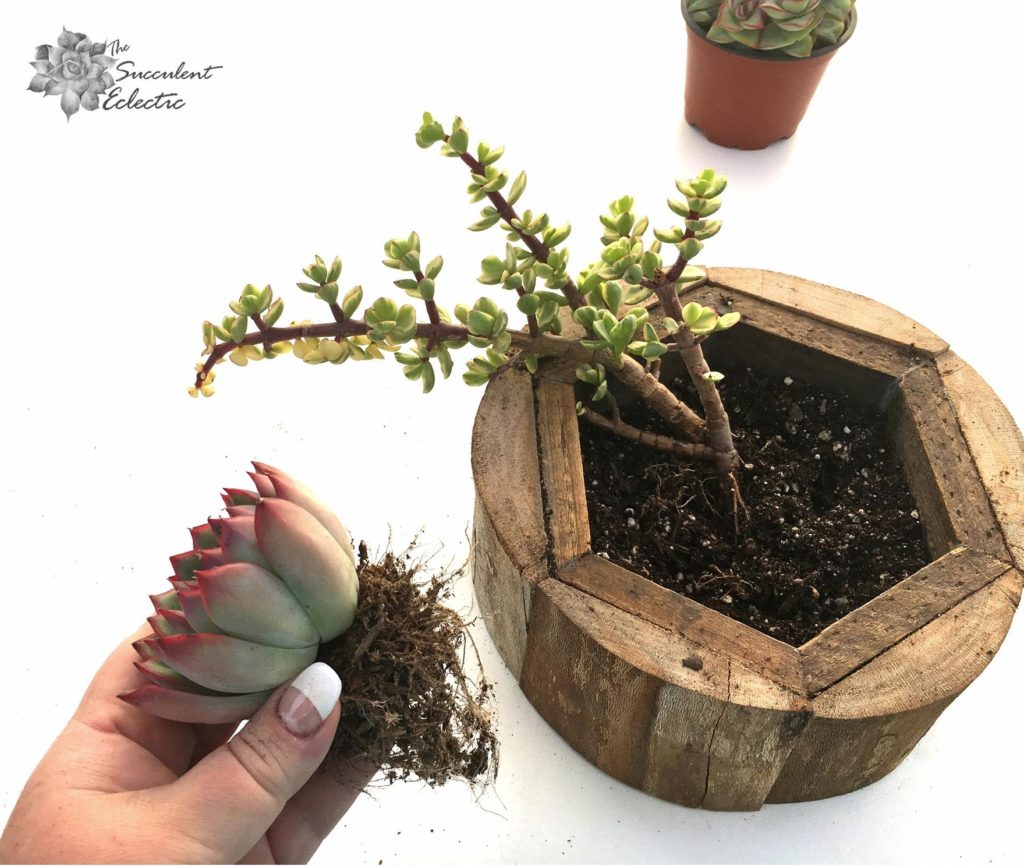
When close planting succulents, knock away most of the excess soil from the roots. This is essential to planting crowded succulents. Usually, when you take a succulent out of its nursery pot, the roots and the dry soil hold the shape of the nursery pot. For really crowded succulents, you’ll be planting too close to maintain the shape of the pot. Without the excess soil, you’ll tuck the roots into a spot far smaller than the pot the succulent grew in. Firm up the soil around the roots to keep the plant in place.
Because this is a round planter that I want to look good from all sides, I planted my tallest succulent, the Portulacaria, in the center. I planted the Echeveria at an angle to slightly hang over the edge of the planter. I like a natural look, so I avoid obvious symmetry, and I like a somewhat wild look to my succulent arrangements. Follow your own aesthetic.
Arrange Planter from All Sides
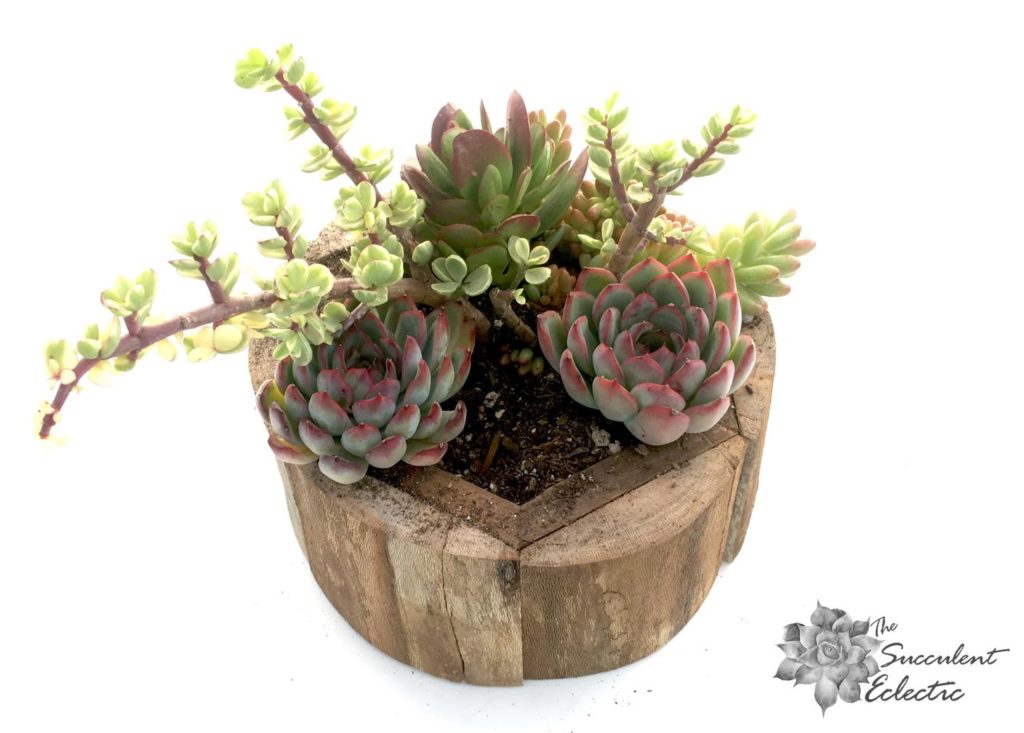
As you plant your crowded succulent arrangement, continue to turn the planter. View it from all sides so the final arrangement is full, balanced and attractive all the way around.
Divide larger succulents as you plant. I only used part of the Portulacaria, and I separated individual parts of the Crassula and the Sedum to tuck them in among the other succulents.
Fill in spaces between and around and over the roots with additional succulent soil. Firm it into place. I use the blunt end of a chopstick (another of my favorite tools) to tamp down the soil between crowded succulents.
Add Moss for Finishing Touch
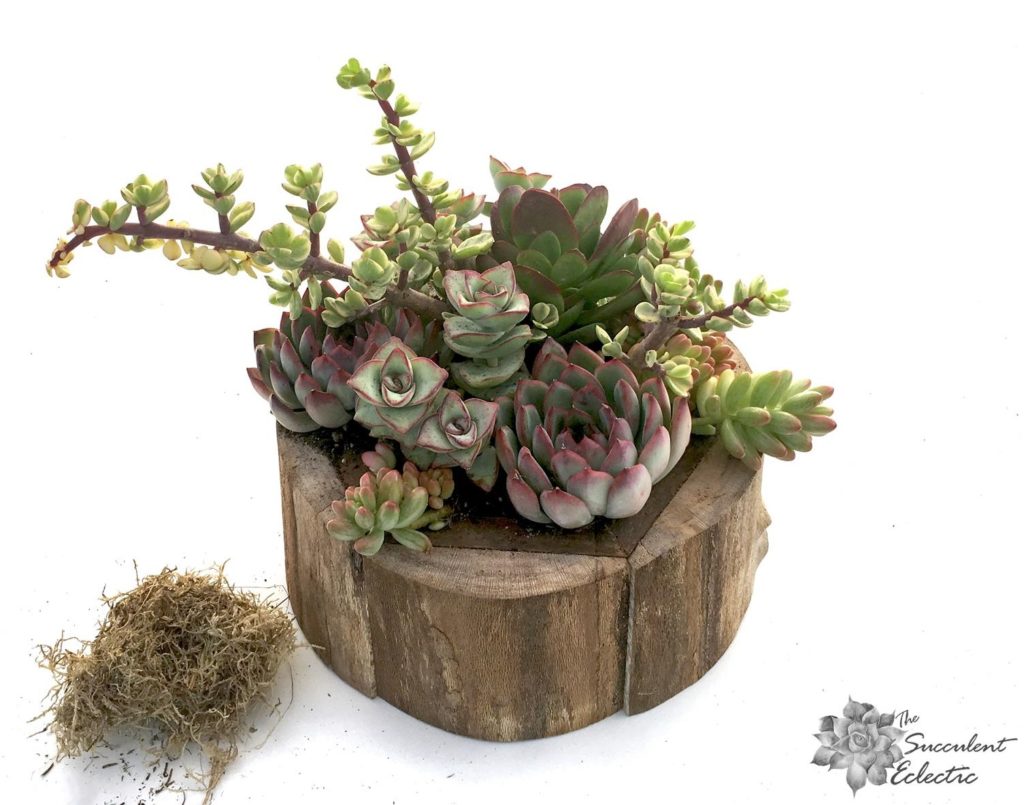
I promise you, there is room for even more succulents! That may be my personal motto! 🙂 But this seems like a good place to stop. To cover the bare soil, I added just a whisper of natural sphagnum moss in a few spots. Soak the moss in water to make it pliable. Squeeze out excess water, and tuck small bits in among the plants.
Close Planting Succulent Arrangements
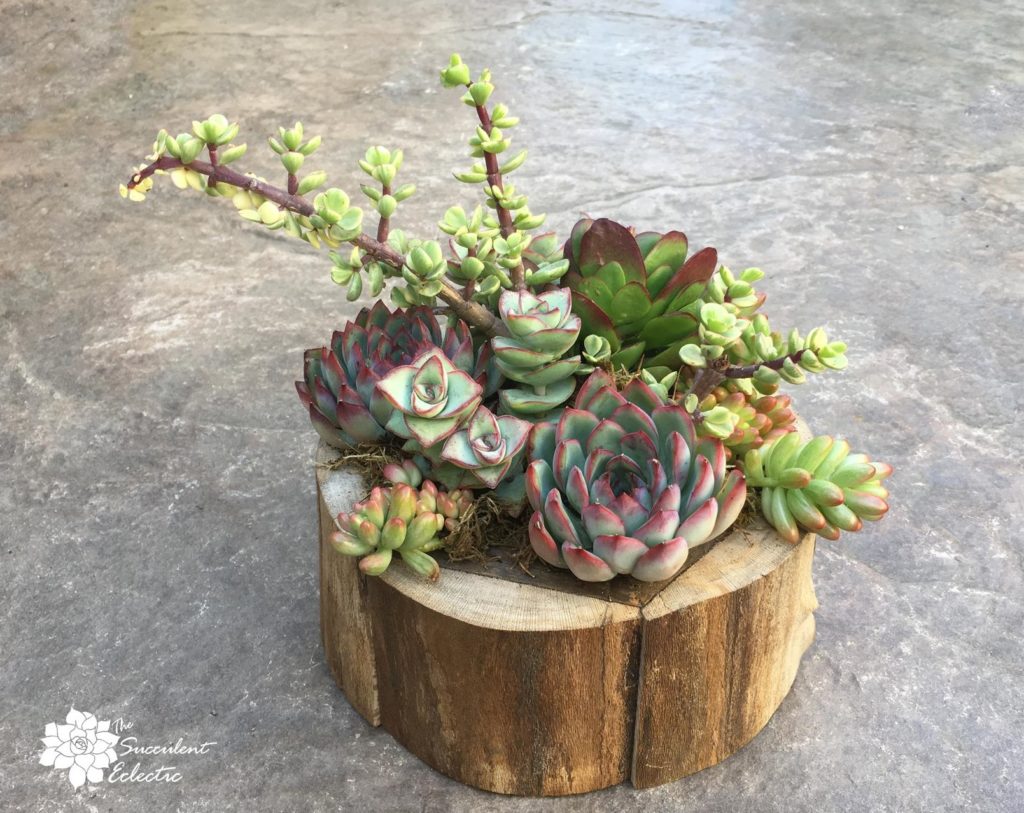
I deliberately did not choose any Aeonium or Graptopetalum for this arrangement. You can certainly close plant these succulents. But I want to enjoy this crowded succulents arrangement for a good long while. Both Aeonium and Graptopetalum grow long stems with the rosettes at the end of the stems. This type of succulent quickly grows too tall for such a low arrangement. They would be more likely to outgrow this arrangement.
Here, I expect the Sedum rubrotinctum to eventually spill over the side of the planter. It is a lovely trailing variety. The Crassula perforata will grow taller. I suspect the Portulacaria will branch a bit more and grow taller. The Echeveria and Crassula platyphylla will grow a bit larger around. Overall, it will fill in a bit, and I might want to prune the tall growers a bit, but it should thrive for well over a year!
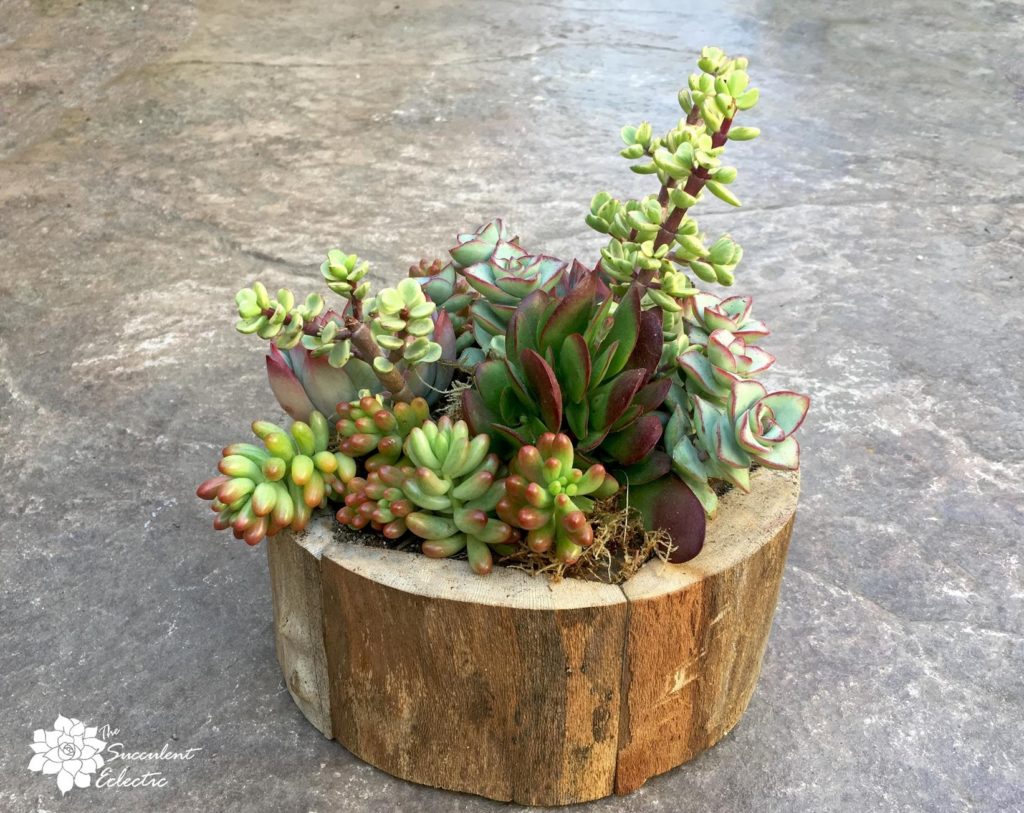
Be sure your succulent arrangement is full and attractive from all angles.
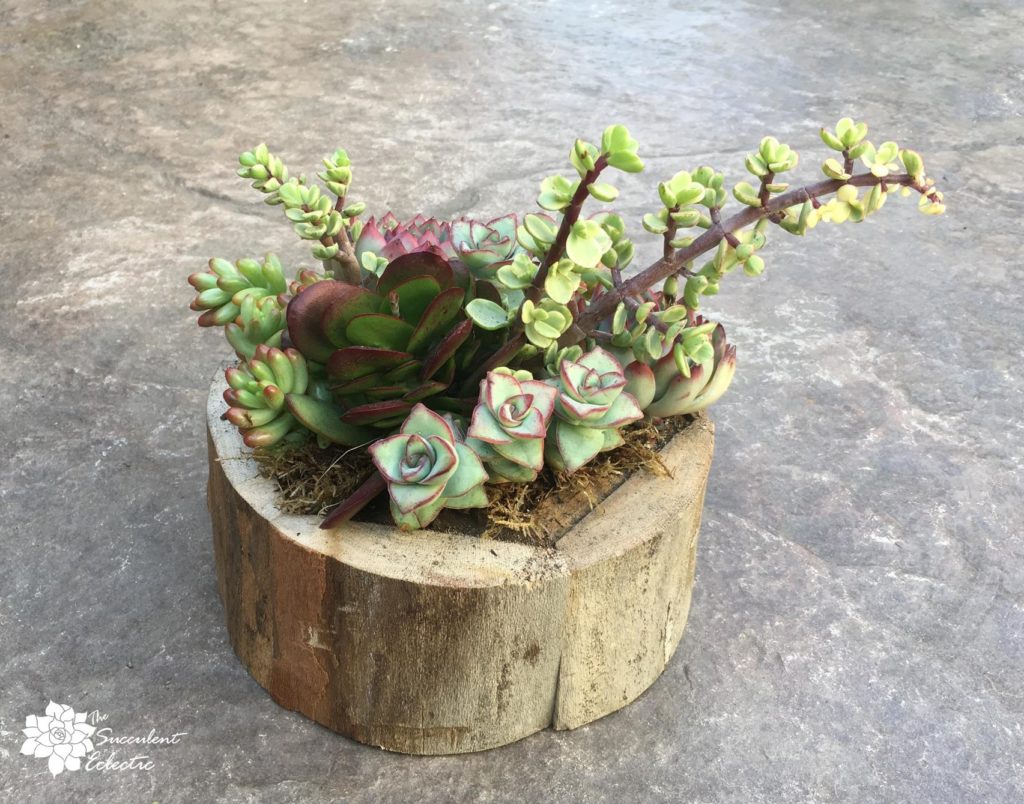
In time, the Sedum will spill over and the sides of this planter will be better hidden. I should have added another sprig of Portulacaria. I could have added a bit more moss…
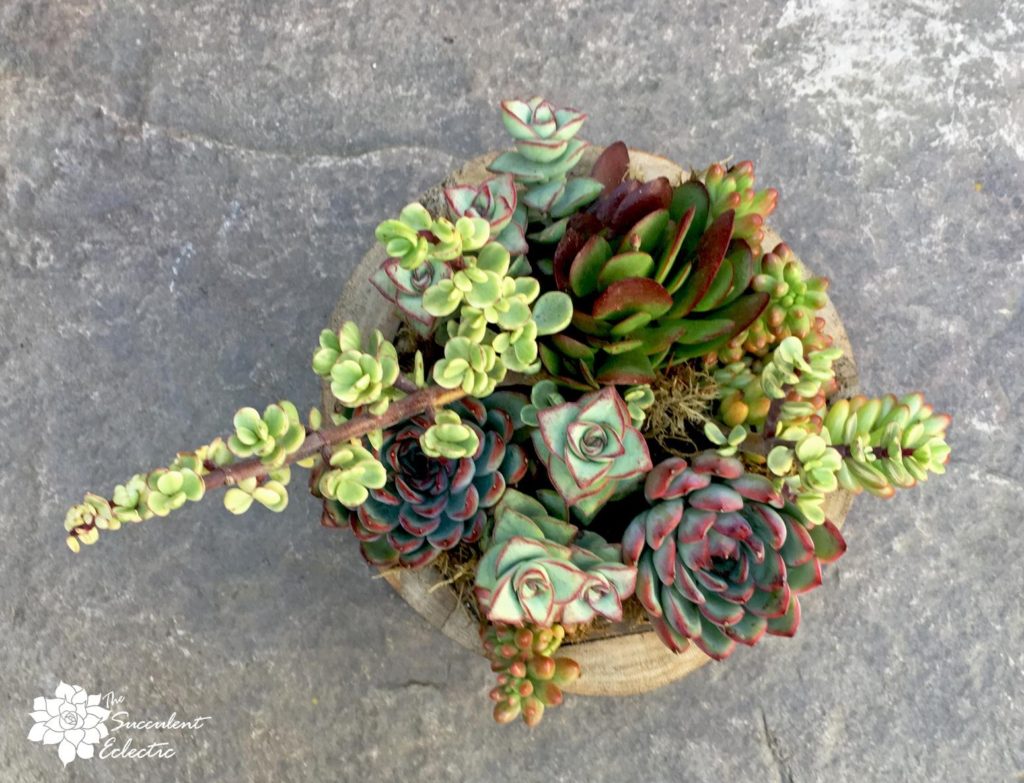
This has the equivalent of six 4-inch potted plants close planted in this succulent arrangement. The opening of the planter measures 5.5″ at its widest point, corner to corner. 5″ from side to side. Not only will these plants grow like this they will thrive! I truly love the look of crowded succulents like this.
Caring for Close Planted Succulent Arrangement
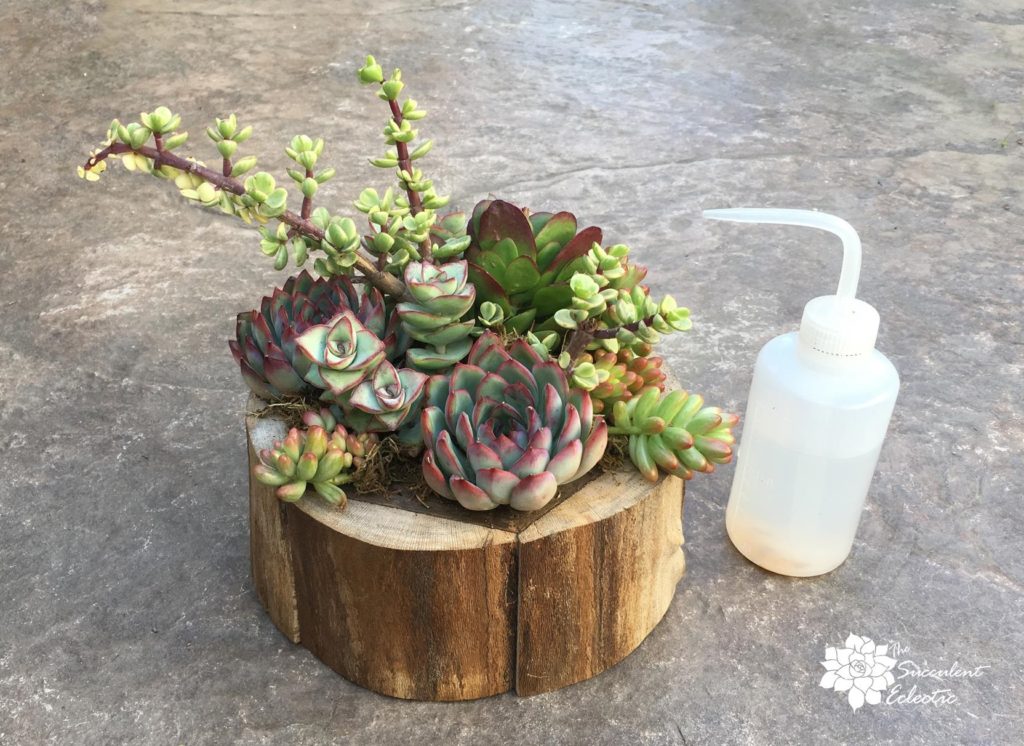
I won’t water this close planted succulent arrangement for a few days. That will give any broken or bruised roots a chance to heal first.
This humble squeeze bottle is possibly my most indispensable succulent tool! The long neck and slender nozzle allow me to get the water right where I need it in a crowded succulent planter like this. Take care to water at the soil line so water doesn’t collect in the crowns of your plants. As always, water thoroughly, but only when the soil is dry.
Remember, the most important part of succulent selection for a planter is that all the plants share similar sun exposure. While you will wait to water, go ahead and return this planter to the same lighting that had the individual plants happy and healthy. In time, this arrangement will develop much more stress coloring as it gets more sun and summer temps warm.
There you have it! I have been promising to write this post for a while. I hope you found it helpful! Please feel free to ask any questions – that’s why we’re learning together! Please leave a comment and I will get right back to you!
Because life is just better with succulents!
P.S. – Please subscribe for more succulent DIYs and care! I’ll send you my FREE e-course 7 Steps to Succulent Success! – Thanks so much!
P.P.S. Why not join my Facebook Group for succulent lovers? We talk about succulent care, propagation, succulent identification, and design. It’s a warm and welcoming group that would love to meet you!
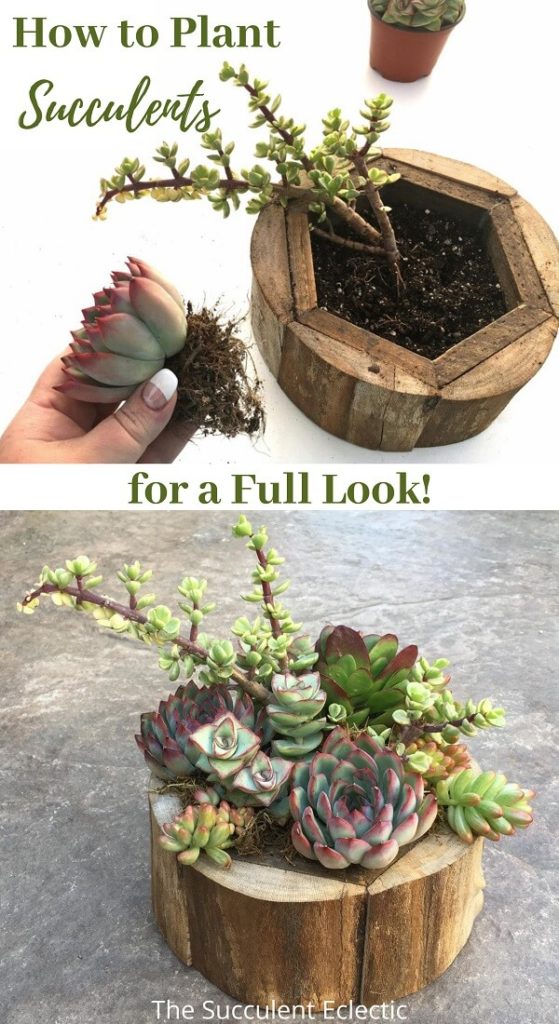
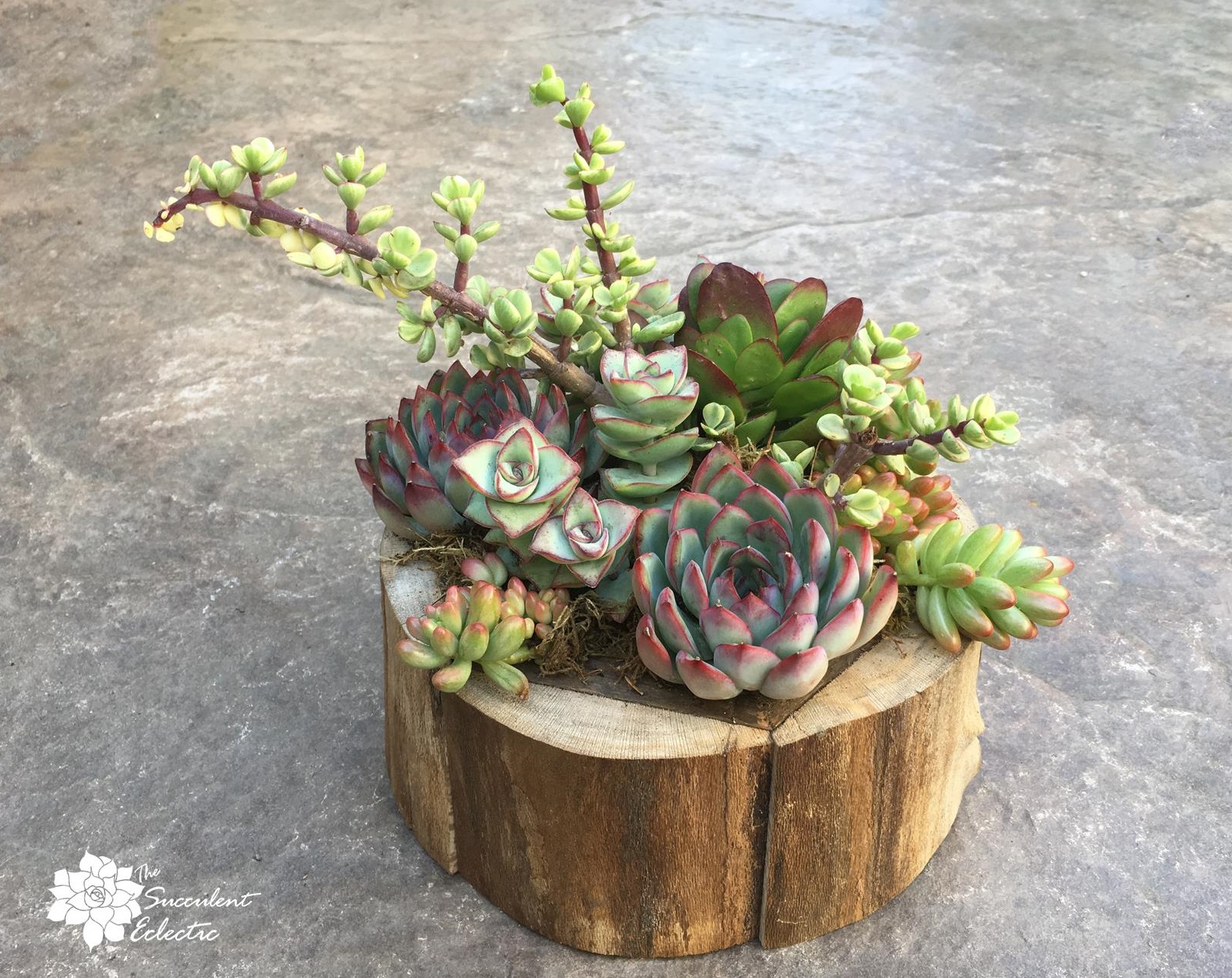
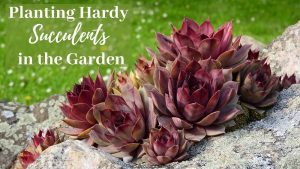
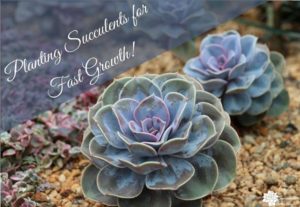
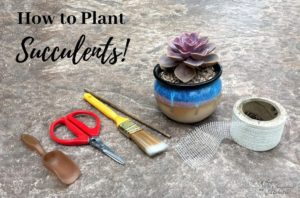
Love your succulent articles—well written and easy to understand and very very helpful.
Thanks so much, @Jo-Ann,
I’m so glad you’re finding the information valuable on your succulent journey! 🙂
~Kat
Very thorough and easy to understand. I learned so much! Thank you, Kat.
One question… how do you check for soil dryness in a tightly packed arrangement? Thanks!
Hi Kathy,
What a great question!
There are four methods you can use to check when a close-planted succulent arrangement needs water:
– Insert a chopstick onto the soil to test it. If it comes out clean, the soil is dry and it’s time to water. If it has soil particles clinging to it, the soil is still moist.
– If the succulents look thirsty, it’s time to give them a drink.
You can judge when it’s time to water your succulents by the weight of the pot. Lift it when it is fully planted, but still dry. Then, lift again after you first water it. As the soil dries, the planter will feel lighter.
– Learn to judge when to water succulents by touch.
Thanks for the terrific question! I’ll have to update the post.
~Kat
Hi! How do you price these arrangements?
Hi Carmen,
I don’t typically sell my arrangements, but if you’re looking for guidelines for pricing your own, you must charge enough to replace the plants, container, and soil. Then, be sure to pay yourself for your time planting the arrangement. You must also build in sufficient profit to make it worth doing. I find pricing very challenging.
I hope this helps a bit!
~Kat